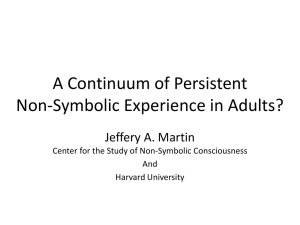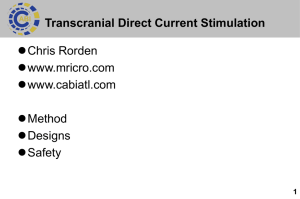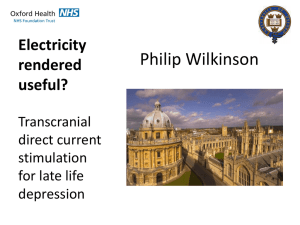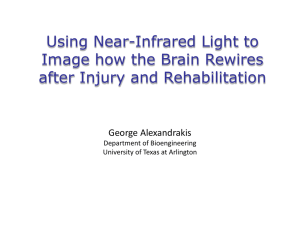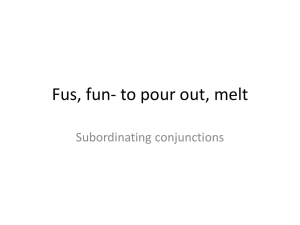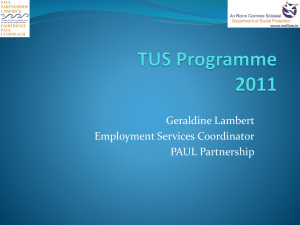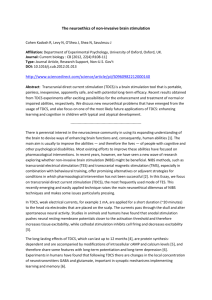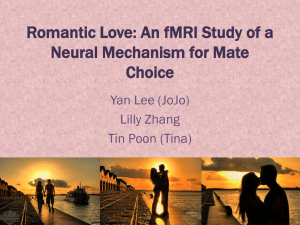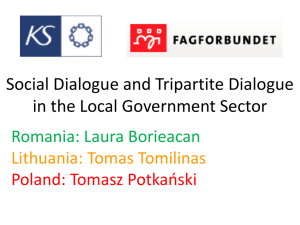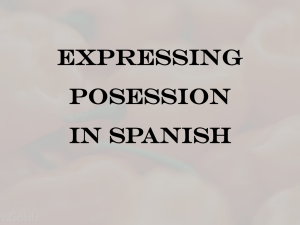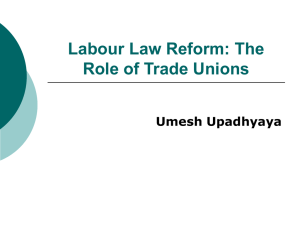PPT, 2014 - Center for the Study of Non
advertisement
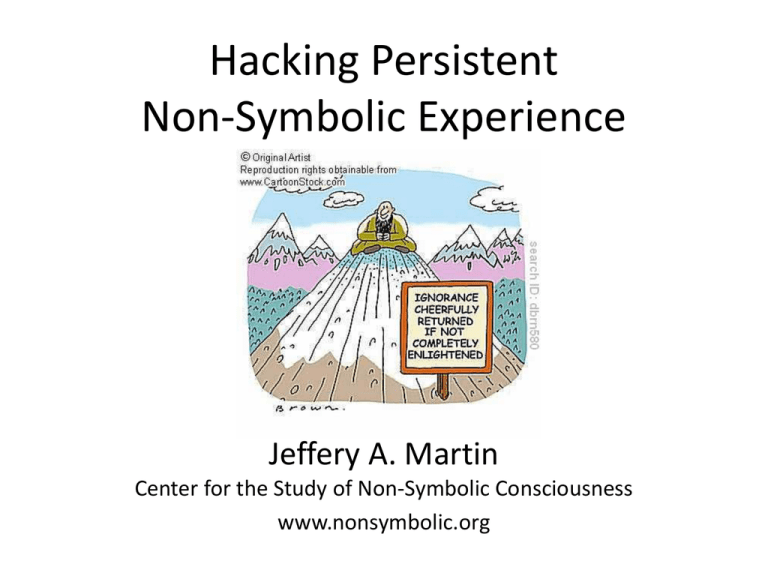
Hacking Persistent Non-Symbolic Experience Jeffery A. Martin Center for the Study of Non-Symbolic Consciousness www.nonsymbolic.org Everyone is looking for something. Something feels missing. Most of us can’t quite put our finger on it. Because it feels like an absence, most of us think that ‘more’… … money, love, approval, whatever … is needed. The population I study doesn’t. They feel complete. When most people think about PNSE… Buddha Maharishi Mahesh Yogi Rumi Bernadette Roberts Eckhart Tolle Ramana Maharshi Sri Aurobindo St. Francis Our Sample • Over 1,000 individuals • Age ranges from 18-90’s • Mostly Caucasian European and North American • Educated • All income levels/diverse socio-economic status • Diverse religious/spiritual representation including atheists and agnostics Approach • ‘Gold standard’ self report measures – Example: Batch 1 - Modified M-Scale, DES2, STAI, SWLS, BFI, TAS, and Modified MUMEX • In-depth interviews (6-12+ hours) – Focused on Cognition, Affect, Memory and Perception – Extracting and refining testable psychological claims from self reports • Experiments • Physiological measurement – HRV, SPV, breath, etc. – EEG, fMRI, … – DNA, blood, and other bio soon… What is PNSE? Narrative Expanded What is PNSE? Narrative Expanded Towards the far end… No Emotion A step or so back… “Loving Kindness” “Proto Emotions” for all other emotions A step or so back… Persistent positive emotion punctuated by negative emotions that fall off quickly PNSE Continuum Location 1 Location 2 Location 3 Location 4 • Experiences cluster together into different types of PNSE • Locations actually represent regions with sublocations • Some people stay in one spot, others move • Generally a forward progression but not always What is PNSE? Narrative Expanded Expanded Other interesting data… You May be Surprised That… • Psychologically “normal” – keep same preferences, hobbies, etc. • Unable to be differentiated in crowd (or work, family, etc.) • Dogmatic • Divorce • Morality, Health Behaviors, … • Stress, physical illness can knock it out How Does it Happen? Purposeful Effort Self Objectifying Event ? Is it all in the brain…? Where Is The “I”? Core Self Auto biographical Self Proto Self “The Feeling of What Happens: Body and Emotion in the Making of Consciousness”. Antonio Damasio. Harvest Books, 2000. Neuropsychological Correlates Fox, Snyder, Vincent, Corbetta, Van Essen, & Raichle, 2005 Default & Task Networks • Default network, intrinsic network – Self referential thinking – Allows mental contemplation of past and future • Task network, extrinsic network – Task oriented behavior – Goal oriented behavior mPFC & PCC Brewer, et al., 2011 Brain Stem • Change in brainstem gray matter concentration following a mindfulness-based intervention is correlated with improvement in psychological well-being. – Singleton, et al., 2014 • Locus Coeruleus, Pontine Tegmentum, Nucleus Raphe Pontis, and the Sensory Trigeminal Nucleus • Serotonin (Raphe) - Sleep, mood, appetite, conditioned fear – Stress down regulates – Very effective for mood and anxiety disorders • Locus coeruleus - Norepinephrine (neurotransmitter), – Modulates arousal – Regulates the interplay between focused vs. flexible responding to environmental demands, or selective vs. scanning attention, – Depression, anxiety, sleep Things to Consider • The brain is very flexible • Quick changes (6 weeks, etc.), but slow habituation • Many brain regions on the Task and Default networks, and elsewhere have been implicated • May need a variety of techniques, methods, etc. Engineering PNSE Not Just About PNSE… Tech • Feedback – Neuro – Other Bio • Stimulation – Neuro • Traditional tools – Augmented or redesigned with tech Types of Feedback • Biased • Unbiased • Real-time • Async • Part-time • Full-time • • • • Visual Auditory Touch/vibration … Applied Research - Feedback Narrow AI rt-fMRI sEEG MEG fMRI Home Neuro-feedback Neurofeedback • rt-fMRI • MEG • EEG Biofeedback • • • • • • • • Pupil dilation Facial muscles Eye blink strength Eye tracking Galvanic skin response Heart rate Breathing Temperature • Breath gasses • Hormones, neurotransmitters, etc. • Blood Applied Research - Stimulation tDCS T/FUS rt-fMRI sEEG MEG fMRI Home Unit • • • • TMS/dTMS tDCS tACS Ultrasound – TUS – FUS tDCS tACS Neuling, Rach, & Herrmann, Front Hum Neurosci, 2013 Brittain et al, Current Biology, 2013 TUS Hameroff, et al.,2012 TUS Sterling Cooley FUS Yoo, et al., Neuroimage, 2011 Traditional Tools • Meditation • Prayer • Psychological tools • Classes, books, other training methods • Apps – Social – Gamification Recent Experiment • • • • Best practices from data 4 months 2 classes – 1 course 6 participants – 3 men, 3 women – high, med, low well-being – 1 man did not successfully complete the program Recent Experiment • NSE – Location 1 = 1 person – Location 2 = 3 person – Location 3 = 1 person • Measures – STAI, STRESS, PILL, M-Scale, NETI, AHI, CES-D, FEQ, GHS, PNAS, Gratitude, Optimism, Meaning, ATH, SWLS – In ‘positive’ direction across subjects PNSE Special Interest Group (SIG) Community Project tDCS Benefits • • • • • • • Learning Memory Language Fluency Mood/happiness Mystical experience Visual Tracking Higher level cognitive functions • Reading • • • • • • Parkinson’s Stroke Schizophrenia Depression Pain Stuttering Community Project • Open tDCS/tACS hardware development • Front and backend website • Cloud based research and sharing Thank You! Slides at: nonsymbolic.org/CH-SF-2014.pptx Paper at: nonsymbolic.org/PNSE-Article.pdf Email: jeffery.a.martin@gmail.com
